Third helicopter station Saturday 21st and begin of fourth ice station D Sunday 22nd
The third ice station (station C) ended on late afternoon on Friday the 20th (with beam net acoustics and helicopter flight, and ice trap retrievals during the day). During the transit to our next stop, we held a lindy hop dance class (Level 2) in the evening and arrived late in the night at the next stop for doing CTDs the whole night and early morning. In the photo below you can see the CTD dragged out of the container to be put in the water (the tubes on the CTD collects water samples from different ocean depths). It is important to take care of the safety when working on deck - yellow helmets and warm bright-coloured dresses to keep warm and visible. The CTD stop was just a short stop, planned to last until Saturday afternoon, whereafter we were supposed to head towards our fourth longer ice station - station D.
In the early morning on Saturday 21st, I woke up again to launch the weather balloon. There were many people awake already at 5am working on their water samples, filtering and analysing. There is a clear change in the ice thickness and ice formations - the ice is much thicker and has lots of ridges, thick snow layers on top and small ice mountain ridges elongated along the ice edges and across the pack ice. The weather felt now 100 procent Arctic - it was snowing rather heavily and we were surrounded by ice and ice ridges, as well as frozen meltponds and leads. To my knowledge I heard that the CTDs were delayed by 3 hours, which would shift the daily schedule slightly. I saw an opportunity for our group to go out with the helicopter for doing some gas flux measurements at a lead 400m apart from the ship. As there we no helicopter flights planned for the day, I kept on asking if we could go and finally we got green light - we could leave right after lunch and be back by 3 pm at the time of departure. This was AMAZING! We packed our stuff and got ready, put on our rescue/floating suites headed to the helipad - The pilot was kind to do this for us - it was only us three going out: me, Lina (was her first time, SOO happy to be out there with her!) and the pilot. I got to sit in front, as two persons are needed to be seated in front for polar bear surveys and in case of emergency. It was absolutely amazing - we flew a few rounds around the area to look for polar bears - important to check it since we only had one polar bear watch instead of two as usual. We found it to be safe and landed on the ice next to a lead. When we were allowed to start our research, we set up all our instruments and then maintained it while enjoying the scenery and being out there - surrounded by ice, water, helicopter, Oden and snowfall. The time was a bit restricted as we had to be back by 3 pm, but we managed to do the measurements we wanted to do - except for measuring the ice thickness. We could only come down to 3m and the ice was thicker than that! I truly wish we get more opportunities to fly out with the helicopter for some flux measurements over ice and leads during the last 22 days we have left out here in the Arctic.
In the afternoon we were transiting to our next 24-h ice station, while the weather changed completely: from snowfall and cloudy conditions to almost blue sky and sunny weather, where the sun rays was reflected beautifully on the melt ponds on the ice. What a beautiful evening!
Today, Sunday 22nd of August, I launched the balloon, as usual, but it was snowing again! It is also rather wind still outside, and the helicopter is out for deploying equipments (fishing traps etc), to be retrieved the next day at the end of the station. As the winds are expected to increase during the day and maintain until tomorrow, they chose to conduct acoustics and fishing today, whereas the working on ice is shifted to tomorrow, even though it might be rather harsh conditions to work on the ice with strong winds and snowfall. For our team, we will do some overside gas flux measurements today in the early afternoon from the ship, trying to avoid the heavy winds and prepare for the ice station tomorrow. As we are already located at our ice station D, we will be stationary here until tomorrow, until we are finished with the work on ice and CTDs.
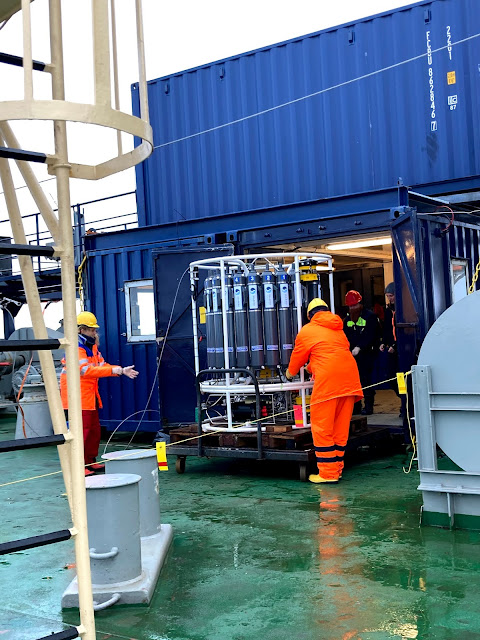
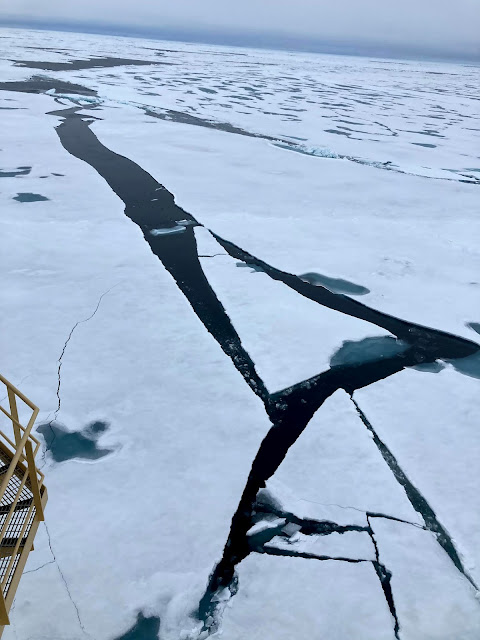
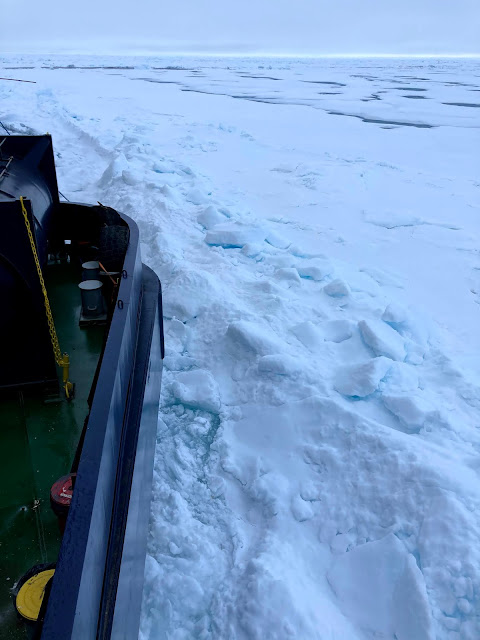
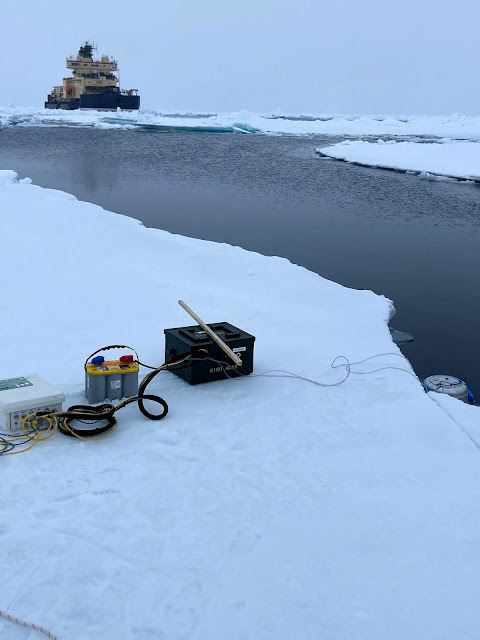

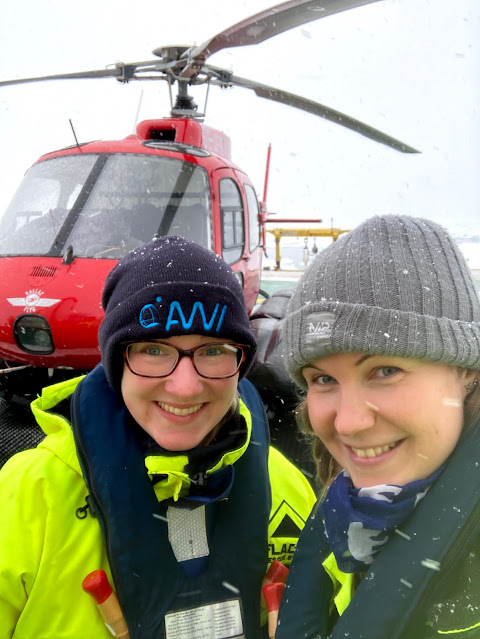





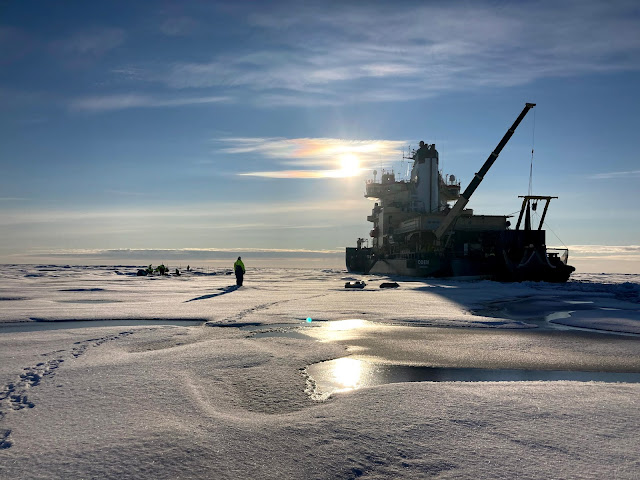
Hi Sonja & Olle, I wish you all the best also during September!
ReplyDelete